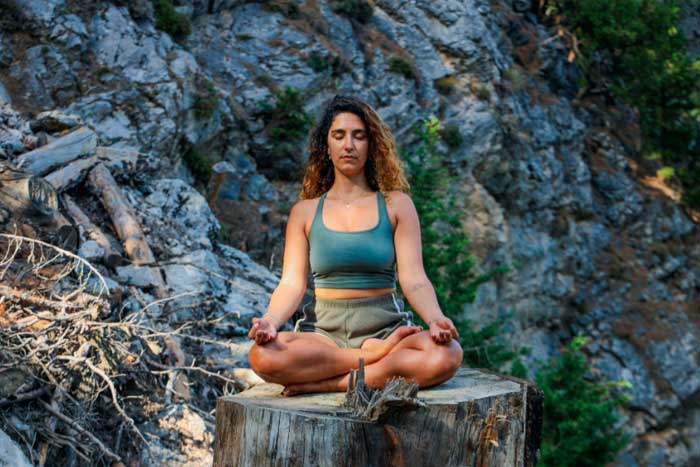Meditation is not a one-size-fits-all practice. It can be shaped by sound, movement, routines, and our environments, making it adaptable to individual needs and lifestyles. Many people turn to meditation seeking calm, but the process of getting there involves more than just sitting still. By incorporating elements like mindful walking, gentle music, or daily rituals, the practice becomes more accessible and sustainable.

Over time, these small efforts can lead to noticeable emotional and mental shifts. Whether through breathwork or the rhythm of footsteps, meditation encourages deeper awareness and a sense of connection to the present moment. Integrating these elements gradually allows the benefits to grow and take root in everyday life. With consistent practice, Robert Beatty demonstrates how meditation grows from a technique into a way of being.
The Purpose of Meditation
Meditation is often thought of as sitting quietly with eyes closed, but the practice is more flexible than that. At its core, meditation involves bringing awareness to the present moment, whether through breath, movement, or sound. People turn to it for many reasons, including managing stress, improving concentration, or finding emotional balance.
Some approaches use stillness, while others incorporate subtle activity to help the mind settle. A person might focus on their breath during a commute or pause to notice their surroundings during a walk. These moments count as meditation too, showing that the practice can adapt to different lifestyles and preferences. Even a brief pause between tasks can serve as a reminder to return to the present.
The Role of Movement in Enhancing Mindfulness
Movement can bring awareness to parts of the body that are often ignored during stillness. A slow walk through a quiet park or gentle stretching at the start of the day can draw attention to physical sensations, helping the mind settle and become more present. These forms of meditation allow thoughts to pass without judgment while staying connected to the rhythm of the body.
Practices like tai chi or mindful walking encourage a flowing connection between breath and motion. Each step or gesture becomes a point of focus, making it easier to stay grounded. When the body leads with intention, the mind often follows, creating a natural state of mindfulness. Even simple things like standing up and stretching with awareness can provide a meaningful pause in a busy day.
Using Sound as a Tool for Deeper Focus
Sound has a unique way of capturing attention and guiding it inward. A soft chant, the steady hum of a mantra, or the gentle tones of a singing bowl can create a space where the mind quiets naturally. These sounds act like anchors, pulling attention away from distractions and toward a calmer state.
Natural sounds—like ocean waves, rain, or birdsong—can also help deepen focus. When paired with breathing or relaxation, they provide a soothing backdrop that encourages inner stillness. Sound doesn’t just fill the space—it shapes it, offering a steady rhythm for awareness to follow. Even silence between sounds can become part of the practice, offering moments of reflection.
Combining Movement and Sound in Daily Practice
Bringing movement and sound together can turn a simple routine into a grounding ritual. A gentle sway while humming or stretching with soft music in the background invites the body and mind to sync. This combination doesn’t need to be complex—what matters is the intention behind it.
Someone might start the morning by walking slowly through their home while softly repeating a calming phrase. The blend of motion and sound helps deepen awareness without requiring formal meditation sessions. Even pairing breath with a quiet melody can create a sense of rhythm that carries into the rest of the day.
Creating the Right Environment and Routine
A consistent setting encourages the mind to settle more quickly. When the same corner of a room or the same time of day is used regularly, it creates a kind of muscle memory for stillness and focus. Lighting, temperature, and even scent can all play subtle roles in shaping the atmosphere.
It doesn’t need to be elaborate. A quiet space, even just a few minutes carved out after waking or before bed, can work wonders. The key lies in showing up with presence, not perfection. Adding a small object like a candle or favorite cushion can further signal to the mind that it’s time to turn inward.
Observing the Effects
As weeks pass, small shifts often become noticeable. The breath may feel steadier, or thoughts less chaotic. There’s a quiet kind of change that builds gradually—less reactivity, more clarity. These signs suggest the practice is taking root. It’s not always immediate, but the cumulative effect becomes clear over time.
Some days might feel different than others, and that’s part of the process. What matters is noticing—how the body responds, how emotions unfold, how the mind begins to soften. With continued practice, movement and sound become more than techniques; they become companions in the journey. Even when challenges arise, the foundation built through regular practice offers a steady place to return.
